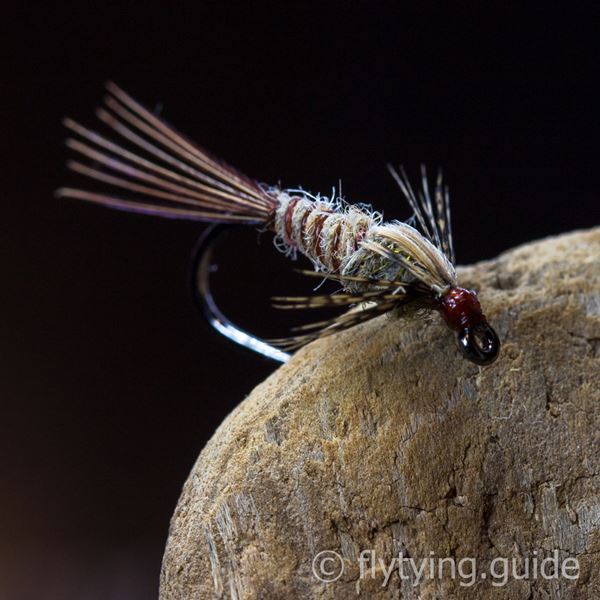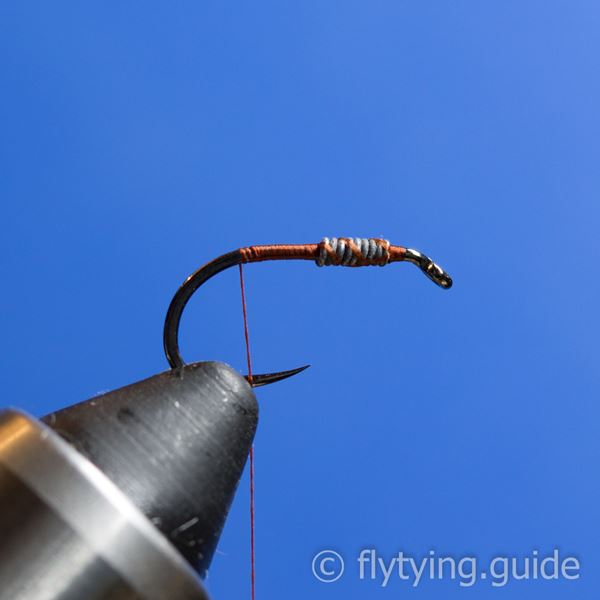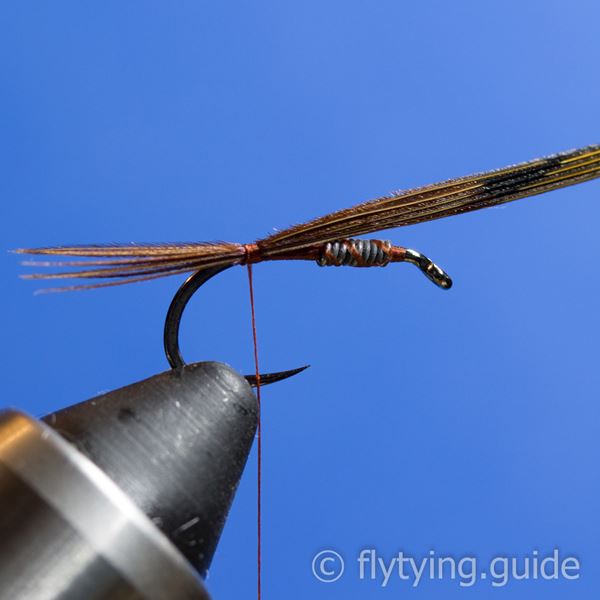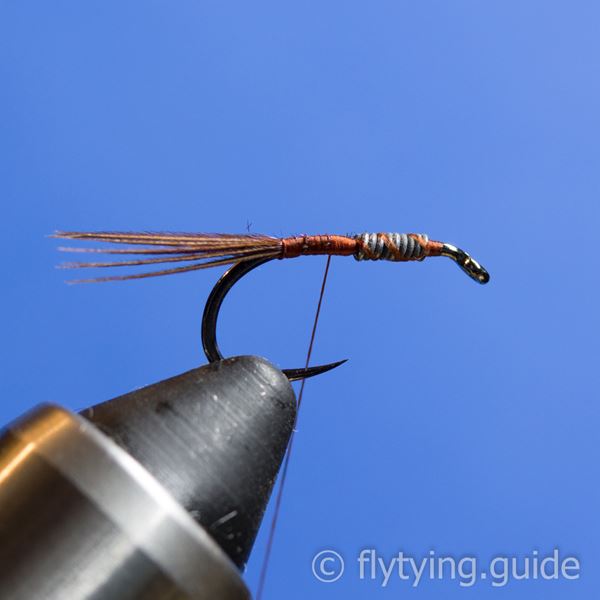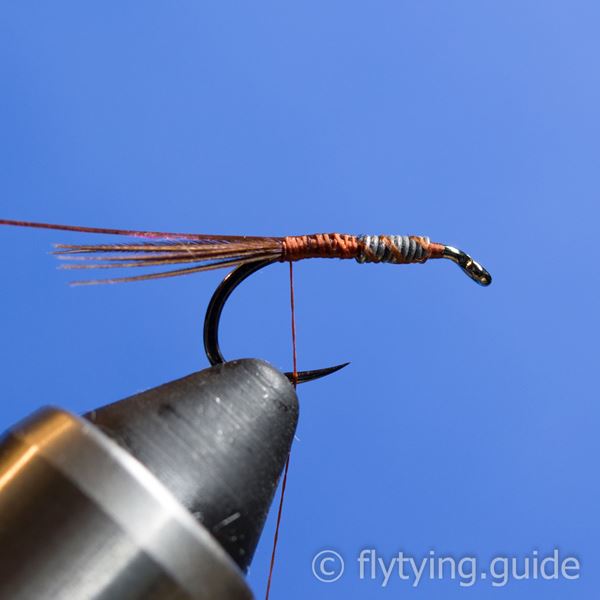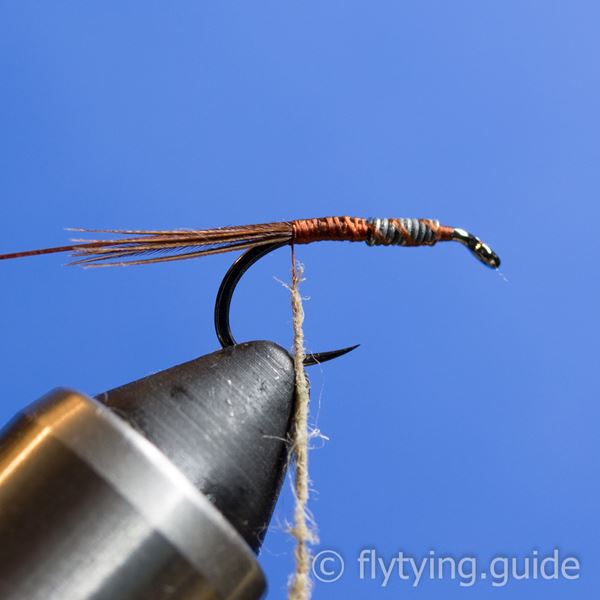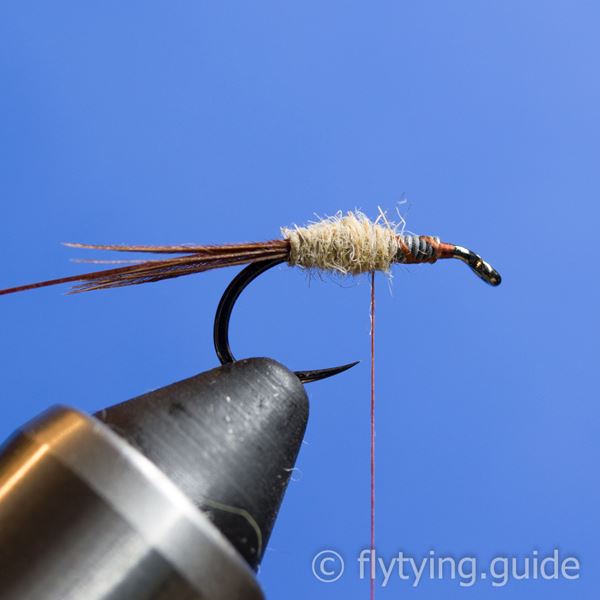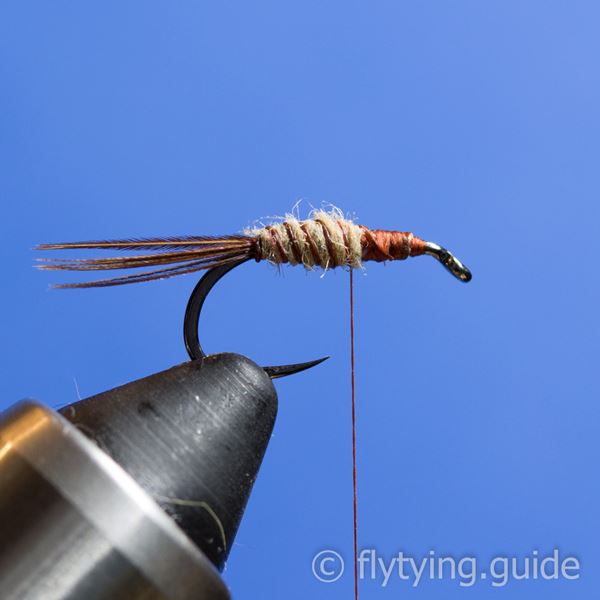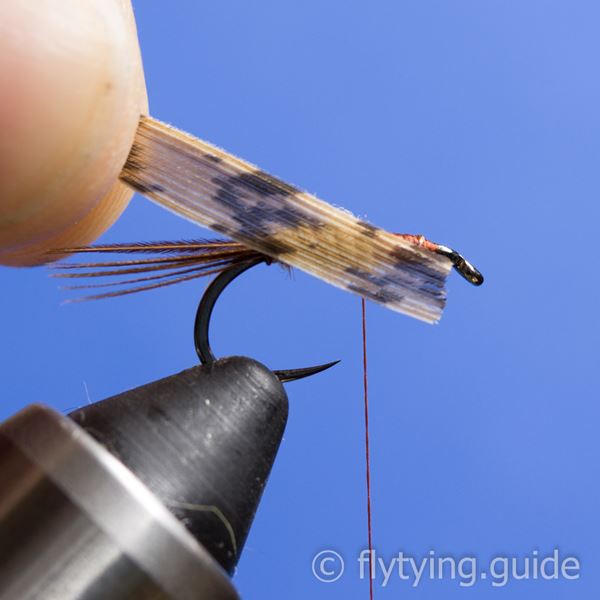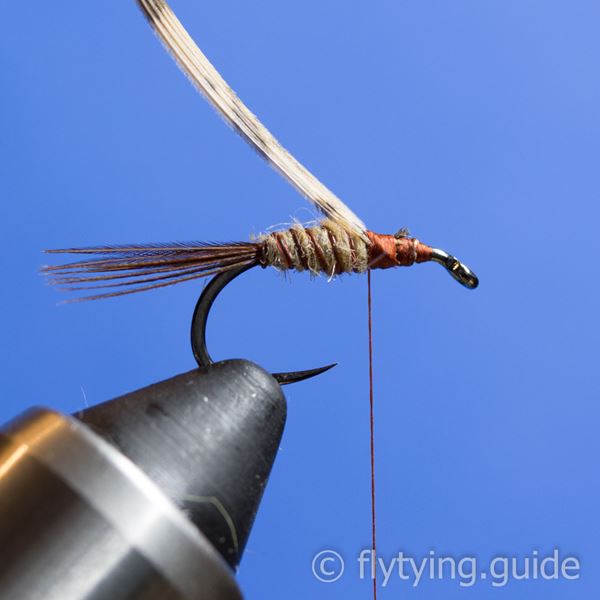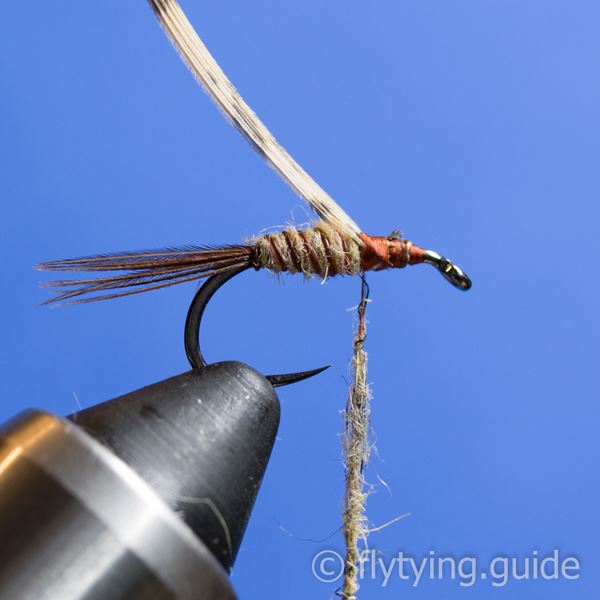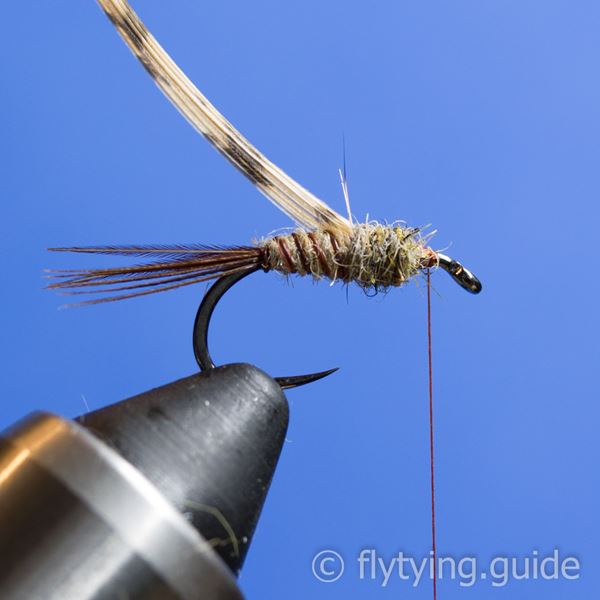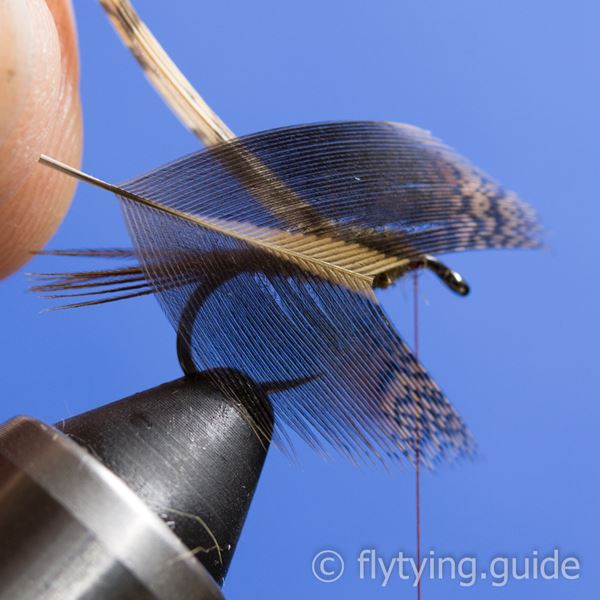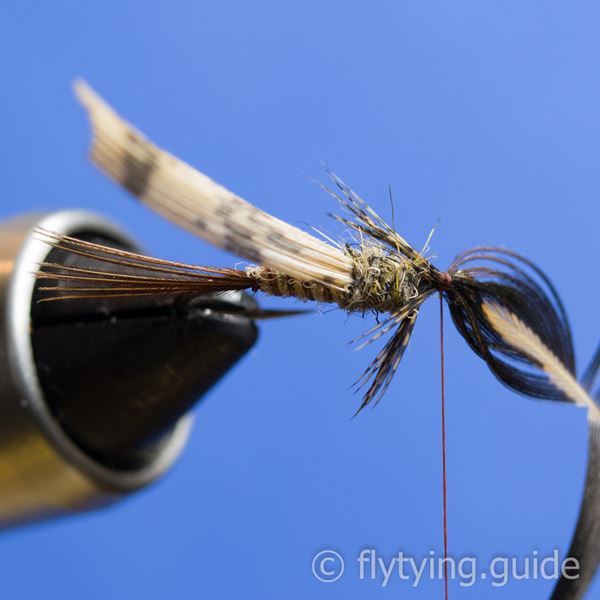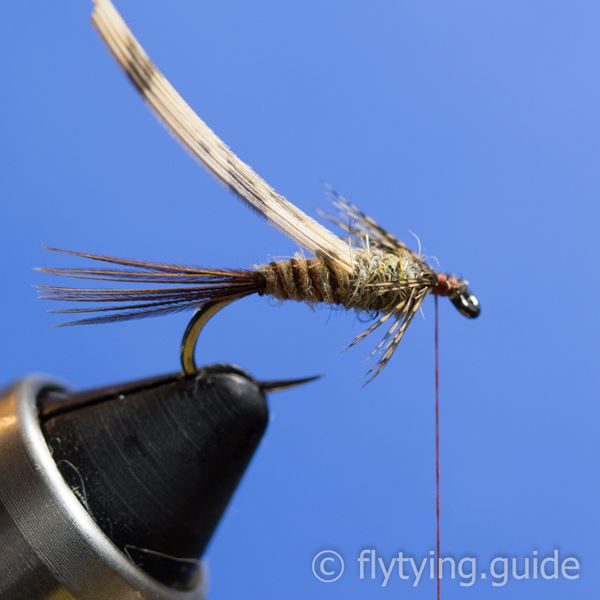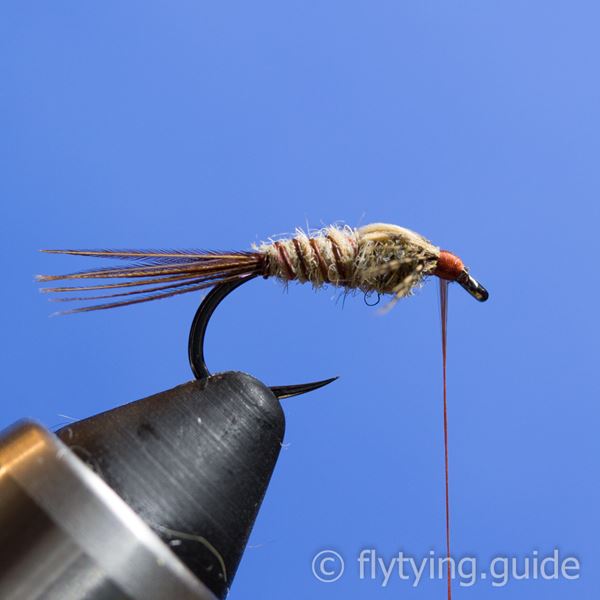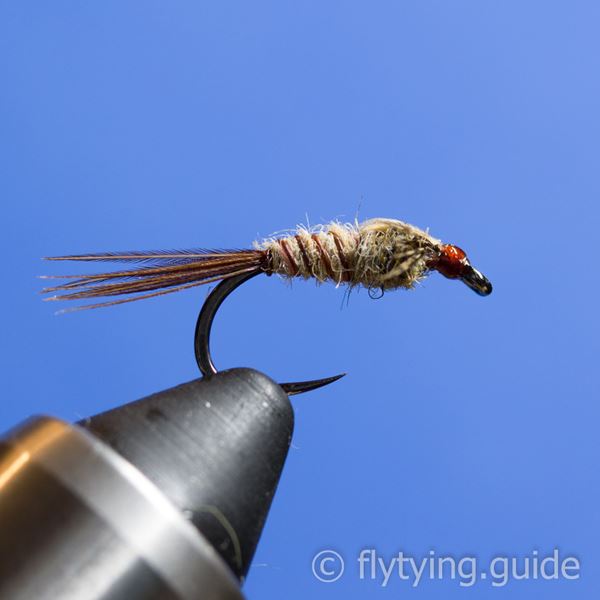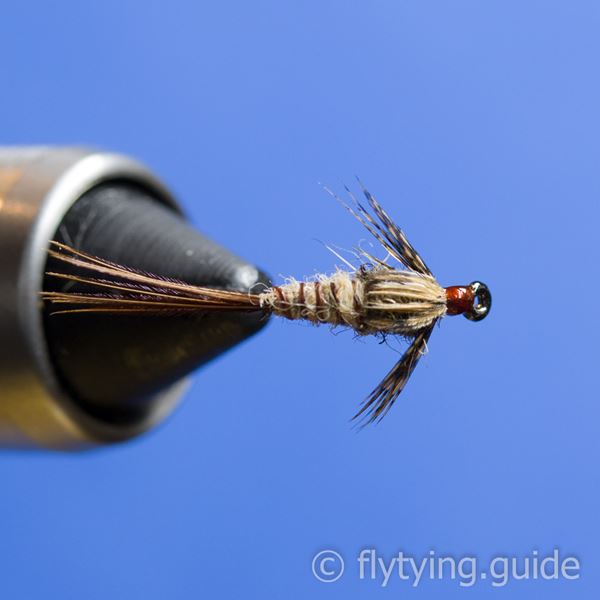March Brown Nymph
Nymph pattern tied using light colors to imitate the March Brown. A light tan dubbing is used on the body with a slightly darker one used for the thorax, pheasant tail fibers make up the tail and hungarian pheasant feather fibers are used for the legs.
- Submitted By: Fly Tying Guide
Materials
13
Position the feather so that the tips are just beyond the thorax, and then stroke the fibers back and pinch them against the side of the fly with your off hand. Take one loose wrap of thread to secure the legs and check for positioning. Adjust if needed and then take 2 to 3 tight wraps once satisfied.
